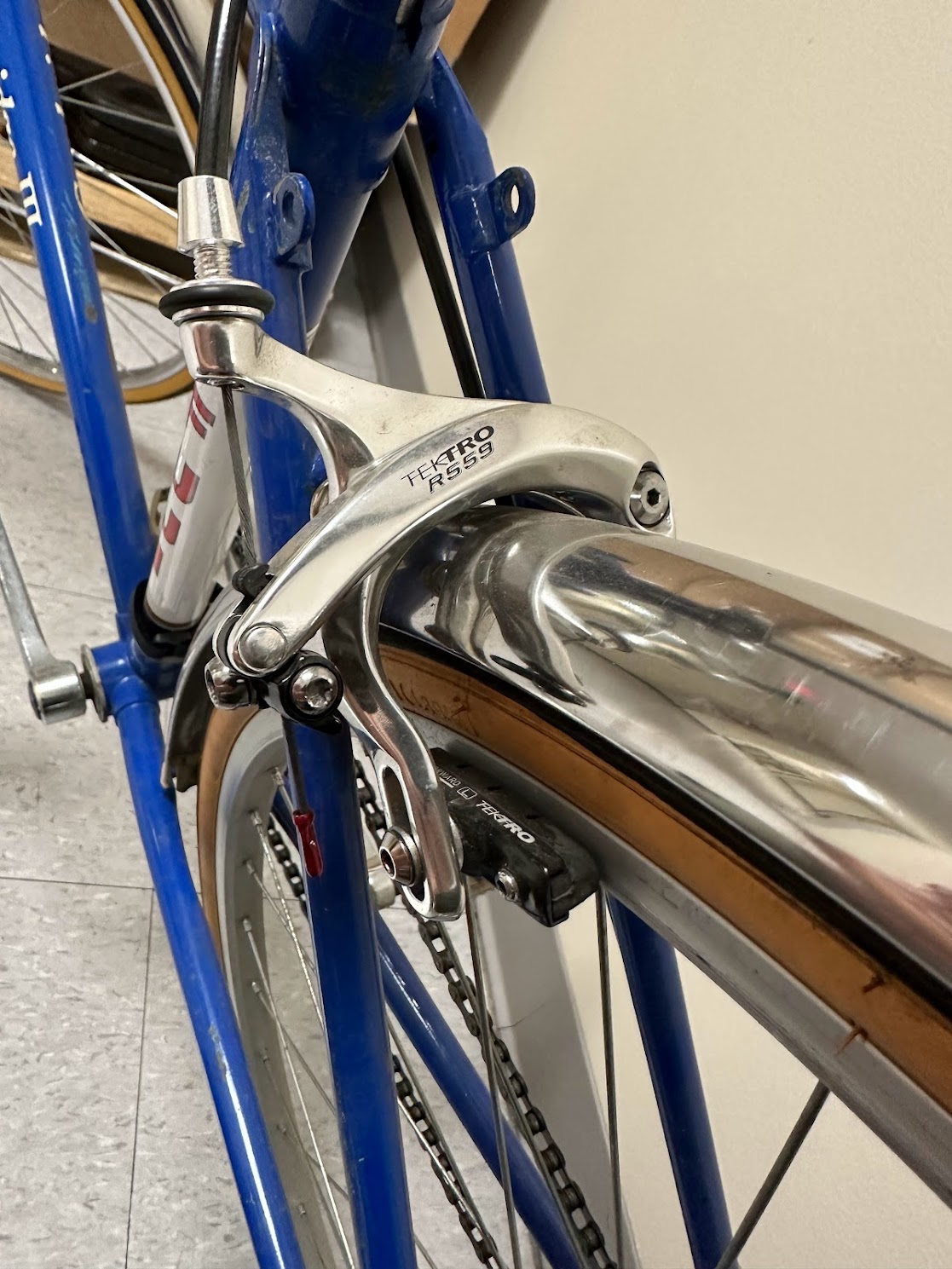I've been gradually restoring an old Fuji 3-speed, and I'm looking to improve the braking performance. Right now, if I have any speed at all, I feel like I can barely get enough braking power to come to a stop. In particular, the rear brake feels very weak.
I installed Tektro R559 calipers. The rear wheel has an aluminum rim (27") which I expected would improve braking performance but the rear brake feels much weaker than the front. Currently, I'm still using the original Dia-Compe levers, but I'm wondering if replacing the levers with new levers like the Tektro FL750 would improve the braking performance, or is there a better model/style of lever I should go for? I can't tell from the product specs if the Tektro FL750 would have better geometry/pull for the new calipers, as compared with my original Dia-Compe levers. What are the specs that I should look for in new levers to maximize braking power? I am also considering replacing the cables/housing (should be done regardless of whether or not I change the levers), so any recommendations on housing is also appreciated.
Last question: the front wheel still has the original steel rim. Should I replace the brake pads on the front with something "steel specific"? Or would you recommend I replace the steel rim with a new aluminum rim?
Update:
I have replaced the brake housing and cables (Shimano Universal Brake Cable Set), as well as installed new levers. For the levers, I decided to go with Velo Orange's Grand Cru short pull levers. The brake performance was dramatically improved with the new housing. The old cables didn't slide smoothly in the housing, reducing how much force was getting applied at the wheel. The new cables/housing account for 90% of the improved braking performance. The new levers feel lovely and are very crisp, with no lateral play. I'm sure I could have gotten cheaper levers that work similarly, but these levers are a delightful treat/upgrade. I adjusted the calipers so they're as close to the rims as possible without rubbing, and the short pull levers ensure I'm getting plenty of force when I squeeze the levers even just a little bit. In the future, it would be nice to replace the front steel wheel with an alloy rim to further improve braking performance, but for now I'm happy with the braking performance, and it's probably "good enough" for the kind of riding I use this bike for (mostly flat urban environment, never at very high speeds, with only occasional rain).




